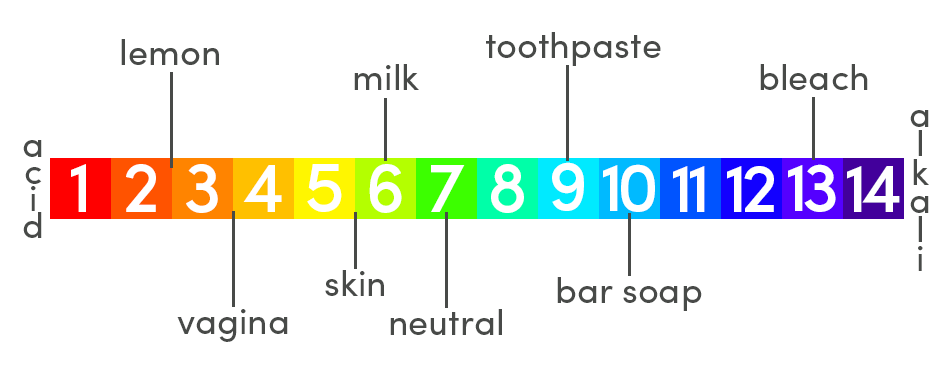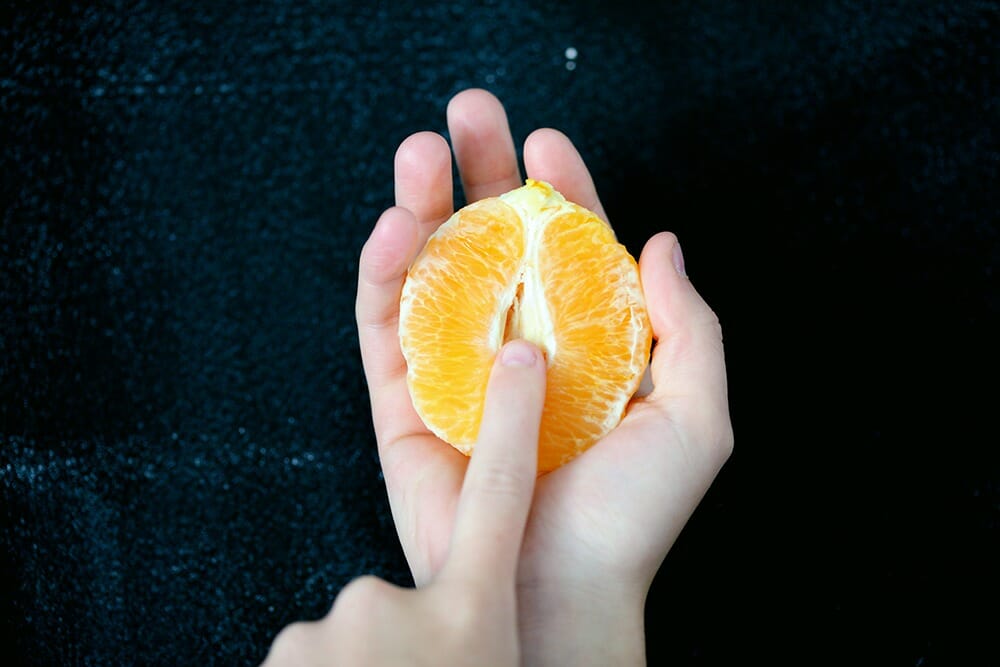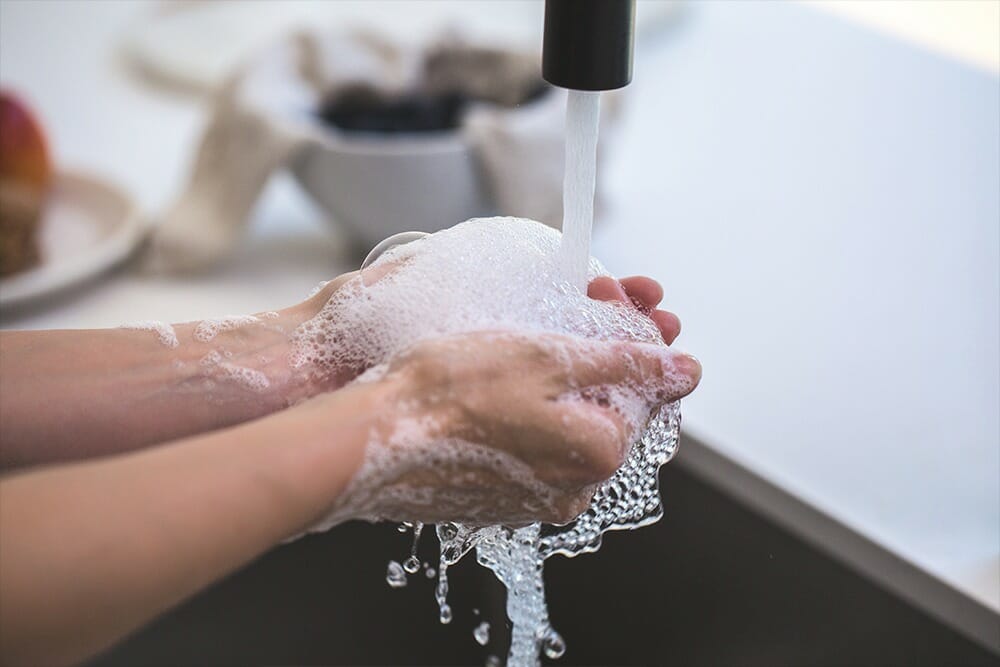This week is the FPA’s Sexual Health Week, so we thought it seemed like a good opportunity to take a look at one of the most puzzling industries out there: feminine hygiene.
As an industry, it exists off the back of self consciousness around the way our vaginas smell. Or rather, how we think they smell.
Products range from deodorants designed to give a ‘long lasting feeling of freshness’, refreshing cleaning wipes, moisture absorbing powders and intimate moisturiser – with each one being specifically designed for use in women’s intimate areas.
It seems baffling that this industry even exists, when gynecologists refer to the vagina as a ‘self-cleaning oven’. And although it’s a bizarre metaphor, it couldn’t be truer. Yet there are still businesses, brands and products out there that exist solely for making our down there’s feel ‘cleaner’.
Everybody is different – and what products you do or don’t use down there is entirely up to you, but for the sake of easing everybody’s confusion we’ve taken a look at three of the most common topics of feminine hygiene:
- Maintaining your vagina’s pH balance
- Whether there’s any benefit to natural products
- If you really need any intimate wash products at all

Maintaining pH balance
pH levels are something a lot of us probably haven’t thought about since school. But maintaining our skin’s pH balance is one of the most important things we can do to keep it happy – wherever it is on our bodies.
Skin has a natural pH balance of between 5 and 6, making it slightly acidic. This is due to the thin layer of oils that sits on top of our skin to keep it hydrated and protected. Start messing with it, and you’re looking at tightness, dryness, and a whole host of other generally grim feelings.
Despite this, the majority of the soaps you can pick up in the shops are pretty alkaline. This helps them to make our skin feel squeaky clean, by neutralising the natural acidic pH of our skin.
The old-school bar soaps we’ve been using for years have a super high, super alkaline pH level. In some cases we’re looking at a pH level of 10 – which is why your skin can feel really tight and dry after washing. That’s why we avoid using certain chemicals – such as SLS, which is used to make products foamy, and has a pH of 10 – in our products.
So what about your downstairs region? It’s just as important to keep the vagina’s pH level balanced, as the skin around it. It’s slightly more acidic than the rest of your skin – with a pH level of between 3 and 4.
And if you should be using skin care products that are balanced to the pH level of my skin… then you should be doing the same down there, right?
Not exactly.
Get ready for a science lesson. The vagina contains lots of sugar molecules called glycogen, which (healthy!) bacteria break down to produce lactic acid. This acid helps maintain the vagina’s pH level. No fancy intimate wash needed.
There’s also something that feels a little counterproductive about many ‘feminine hygiene products’. Many claim to be specifically balanced to the pH level of the intimate area. But they also – very much correctly – say that you should never use them to wash inside the vagina, just the vulva outside. But inside is where the pH level really differs.
Some brands also say that you can use their products for washing the whole body with. But just as you don’t want to put anything that’s too alkaline on your skin, you also don’t want to put anything too acidic where it shouldn’t be!
In short: yes, the pH balance of the vagina is important… but no, using a “specially formulated” product isn’t going to help keep it at its acidic best.

What about natural washes?
At grüum, we’re big believers that natural is best. And we’re not alone. Everyone seems to be getting more and more concerned about what they’re putting on to and in to their bodies – and the vagina is no exception.
Given that, it’s pretty easy to think that this would mean as long as the product/cleansing method you’re using is all natural – then it’s also all good?
Definitely not.
Douching is a method used by 1 in 6 American women. As a practice, it is considered to hold no medical benefit and can actually pose a threat to vaginal health, leading to infections and increased risk of contracting STIs. Most commercially available douching solutions consist of a vinegar and water solution.
Of course, vinegar is natural, and whilst it seems to be having somewhat of a resurgence as a health food, it’s certainly has no health benefits for the vagina.
Talcum powder has also been used by many women in an attempt to curb odour down below. However, a recent court case in the US ruled that that talcum powder had some responsibility for causing ovarian cancer.
This was because the natural mineral silica, which is the main component of talc, is mined near to asbestos, and had become contaminated. And nobody anywhere is claiming that asbestos has any benefits.
Other natural vaginal cleanses include the ‘v-steam’. Popularised by Gwyneth Paltrow, it was described it as ‘a mini-throne which steam cleanses the uterus.’
When news of Gwyneth’s unusual treatment broke, it was met with groans of cynicism, claims that it was a dangerous practice, and that it was a total waste of money – fair enough, when you’re looking at $50 in a swanky LA health spa for the treatment.
But there are some benefits to the ‘v-steam’ – which involves using steam and a variety of natural herbs and remedies to gently warm the pelvic area. It has been used in Central and South America for years, to help with female reproductive health. Benefits cited include less painful periods, improved fertility and more enjoyable sex.
Whilst this particular natural practice isn’t dangerous particularly – it does highlight one of the wider issues of the feminine hygiene industry. The ‘v-steam’ has its roots medical benefits, but has been turned in to something to sell, playing on women’s fears of being unclean.

So what should I actually be doing?
As we said right at the beginning, how you clean downstairs is entirely up to you – although we wouldn’t recommend reaching for the kettle and dried parsley for a homemade ‘v-steam’.
In terms of what you actually need to use, for most people warm water and a gentle pat to towel dry is more than enough. The most important thing to remember is just to wash outside – remember that wonderful image of the vagina as a self-cleaning oven?
If you do decide that you want some added freshness, a gentle soap or cleanser will do just as good of a job as any specially formulated feminine intimate wash product.
In terms of the best soap for feminine hygiene, there’s really no hard and fast answer. Your best bet is to keep an eye out for a mild, pH balanced soap. Most brands will say on their packaging whether the product is pH balanced – but often won’t give you an actual figure.
You want to be aiming for something between 6.5 – 5.5. This is an area where the internet truly is your friend, as a quick Google brings up the pH level of several popular brands.
Or if you feel like taking a trip down memory lane to year 7 chemistry classes, litmus paper is super cheap to get online and can be used to test to pH level of your soaps from the comfort of your own home/laboratory.
But whatever course of action you take, remember that the likelihood is that everything going on down there is completely normal! If you’re worried about anything, it’s much better to get it checked out by a medical professional rather than slapping some ‘fresh intimate powder’ on it.



